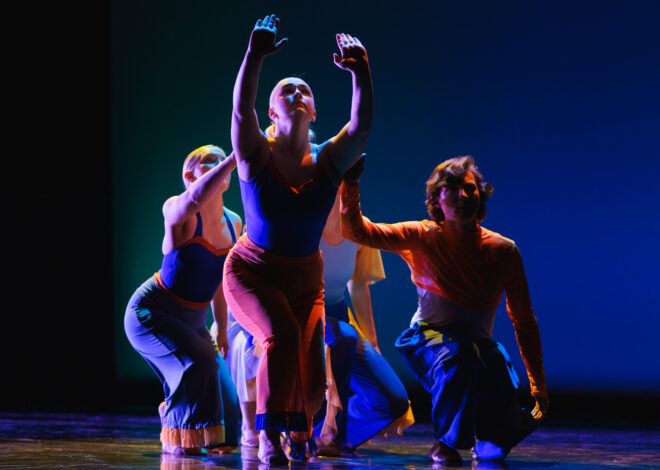
Lightning Strikes Backstage
There are a lot more people involved in a play than just the actors on the screen. To make a production run and smoothly there is a whole team behind the scene.
“The Lightning Thief” the USD’s Theatre department’s next show, is contemporary, but involves many fantasy themes and is a musical adaptation of the book of the same name.
“It’s been a juggle of going back and forth between keeping clarity and how the two things go together,” Costume Designer Krissy Sneshkoff said. “ In this play, you get to be contemporary kids at camp, and then also mythological creatures. So how do you make sure there is a cohesive design between those two things.”
Sneshkoff is a professor and teaches students makeup and costume crafts. Along with her, Sabrina Egeland works as the Costume Shop Manager and oversees student employees in the shop.
“[The students] get paid to work in the costume shop, and hopefully we’re helping them do some skill building, sewing things, but also get to work on some fun crafty stuff,” Sneshkoff said.
Victor Shonk, associate professor and scenic designer for “The Lighting Thief”, has been designing sets for over 30 years.
“It begins with reading the play, we have a director’s concept meeting and then the director gives an overall view of what they are after. Then I go away and do my research and more reading, and then I do stretches. ”
After creating these renderings Shonk narrows down and creates more focused designs.
Shonk’s technical crew consists of work-study students, student technical award students, and practicum students.
“I run the crew and assign people to do these things, and depending on their skill sets and what they need to learn and what they might need for their portfolios,” Shonk said.
Sneshkoff has a similar process when designing the costumes, involving reading the script, reading and listening to the music or the novel if the play is a musical or adaptation.
“I don’t jump to conclusions. I go to the history book,” Sneshkoff said. “It could be primary research, like history, historical images, photographs, garments that actually exist from the time period, or it can be secondary research, such as movies, TV shows, magazines or other people’s interpretations.”
The play takes place at summer camp, where each of the campers is wearing an orange camp T-shirt. To subside all the orange on stage, Sneshkoff adapted the shirts to be unique to each character through methods such as tie-dye, bleaching, cutting, tying, and more.
“The more complicated you plan something to be, the less likely it’s going to work,” Sneshkoff said. “Simplicity is where the magic comes from, so I always have to hold myself back from overcomplicating a project.”
The show will run Nov 22 – 24 and Dec 5 – 8. Tickets are free to all USD students.
“There’s going to be magic, sparks when people die, fog, streamers, secret doors and it’s really playful,” Sneshkoff said. “We give you the information, and then you let your imagination fill in the gaps.”
Photo Credit: Raimondo Genna

